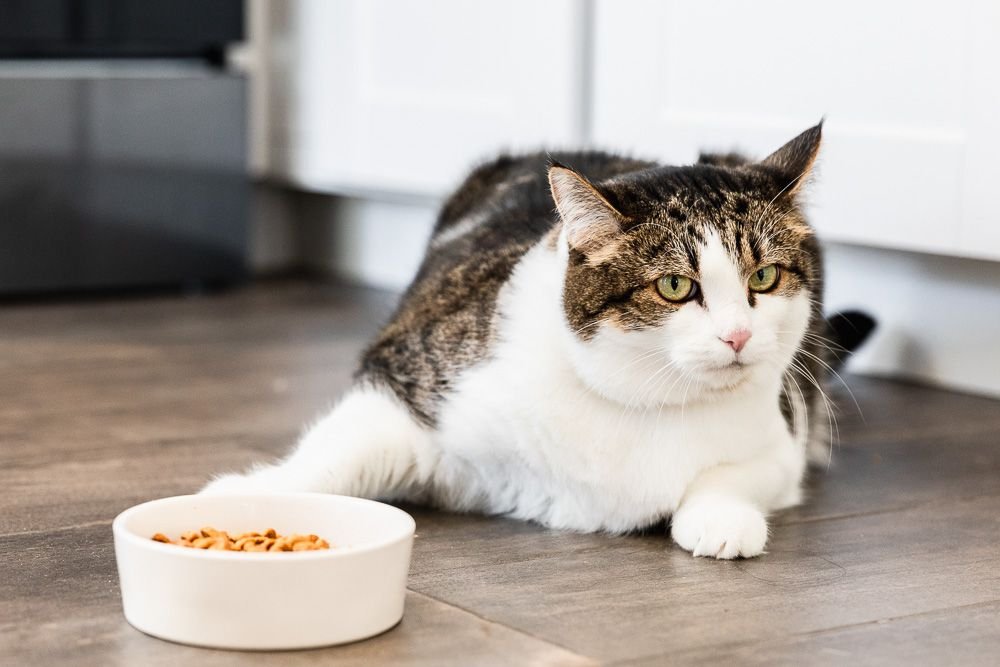In multi-cat households, one common challenge many pets owners face is preventing cat eating other cats’ food. This behavior can lead to conflicts and stress among the cats involved. Fortunately, there are several strategies that can help prevent this behavior and promote harmony during mealtimes. By implementing these techniques, you can ensure that each cat receives the appropriate amount of food and reduce conflicts over food resources.
Preventing Food Theft Through Spatial Arrangement
One effective way to stop cat eating other cats’ food is by establishing separate feeding areas for each cat. This can be achieved by placing food bowls in different rooms or areas of the house, ensuring that each cat has its own designated feeding spot. By creating a clear boundary, cats are less likely to intrude on each other’s meals, reducing conflicts over food resources.
Regulating Meal Times to Deter Food Aggression
To prevent cat eating other cats’ food, establish a consistent feeding schedule for all cats in the household. This helps create a routine and reduces the likelihood of one cat stealing food from another. Feed cats in separate areas at the same times each day, ensuring each cat has access to their own food bowl. This approach can help reduce food-related conflicts and promote a peaceful feeding environment.
Providing Personalized Dining Spaces for Each Cat
Providing personalized dining spaces for each cat is crucial in preventing food theft. Assign separate feeding areas for each cat, ensuring they have their own food bowl and space to eat without interference. This helps reduce competition and conflicts over food. Additionally, consider using elevated feeding stations or feeding shelves to create vertical space, which can further deter cats from accessing each other’s food.
Engaging Cats’ Minds and Slowing Down Eating
Engaging cats’ minds and slowing down eating can help prevent them from eating each other’s food. Try using food puzzles or interactive feeders that require cats to work for their food, which can keep them occupied and reduce the urge to steal food from other cats. Another option is to use slow feeders, which dispense food at a slower rate, encouraging cats to eat more slowly and reducing the opportunity for food theft.
Using Technology to Control Access to Food
Using technology to control access to food can be an effective way to stop cats from eating each other’s food. Automatic feeders with microchip or RFID technology can dispense food only to the intended cat, preventing others from accessing it. These feeders can be programmed to open at specific times, ensuring each cat gets their meal without interference. Additionally, smart feeders can provide feeding alerts and tracking, helping owners monitor their cats’ eating habits and prevent food theft.
Addressing Underlying Health or Behavioral Issues Related to Food Aggression
Addressing underlying health or behavioral issues related to food aggression is essential in stopping cats from eating each other’s food. If a cat is showing signs of food aggression, such as guarding or stealing food, consult with a veterinarian to rule out any medical conditions. Additionally, consider working with a cat behaviorist to identify and address any underlying behavioral issues that may be contributing to the behavior. By addressing these issues, you can help ensure a peaceful feeding environment for all cats in the household.
Conclusion
Preventing cat eating other cats’ food is crucial for maintaining a peaceful and harmonious environment in multi-cat households. By implementing strategies such as establishing separate feeding areas, regulating meal times, providing personalized dining spaces, engaging cats’ minds, using technology to control access to food, and addressing underlying health or behavioral issues, pet owners can help ensure that each cat receives the appropriate amount of food and reduce conflicts over food resources. These proactive measures can promote a positive feeding experience for all cats involved.
